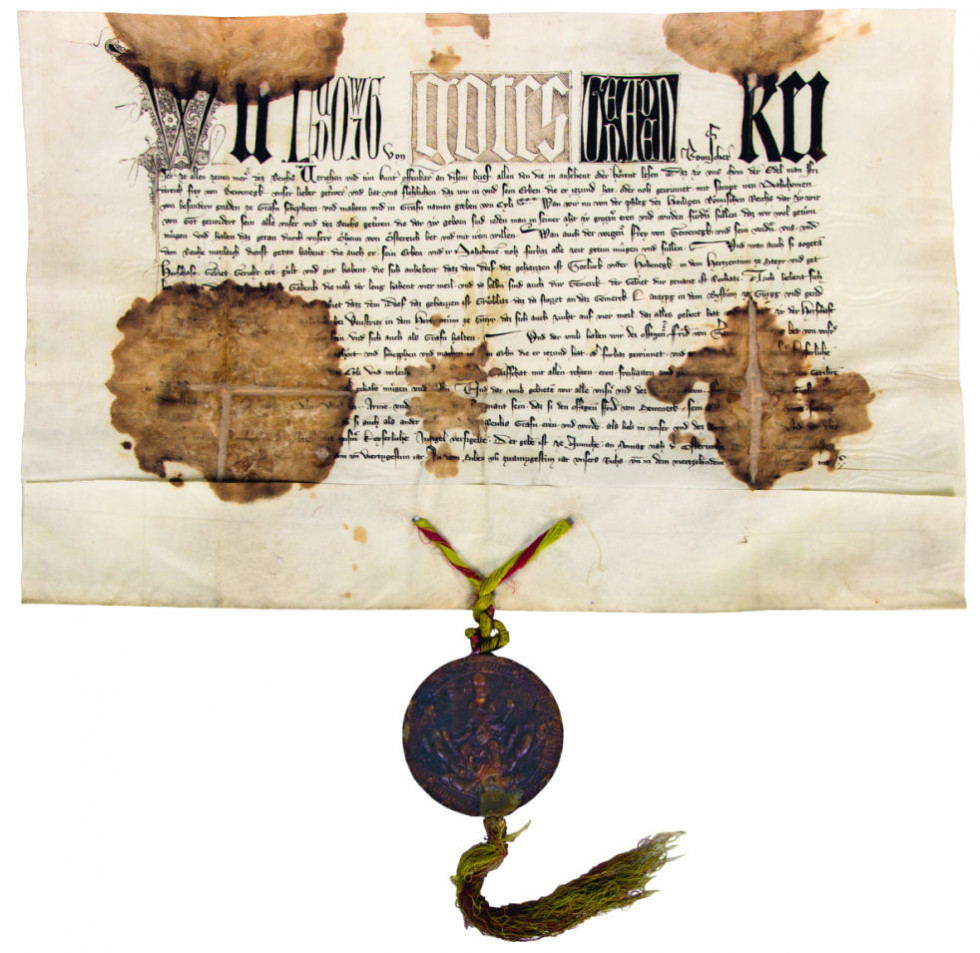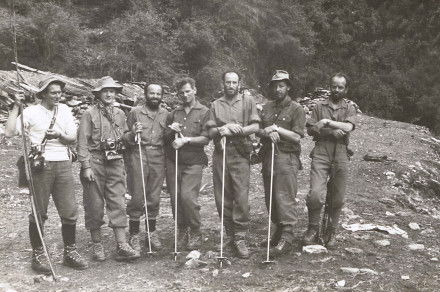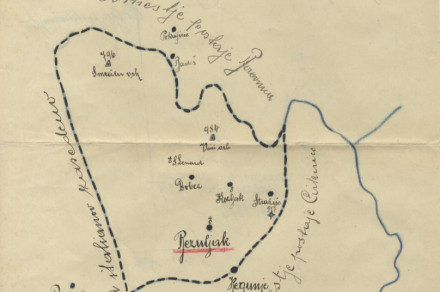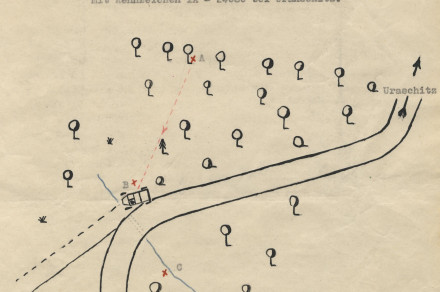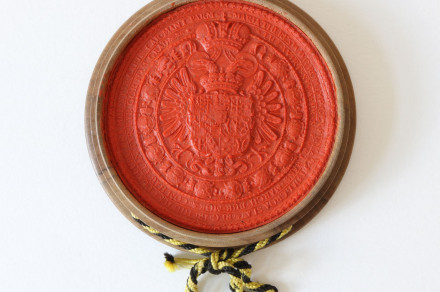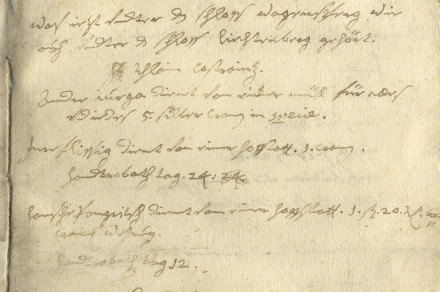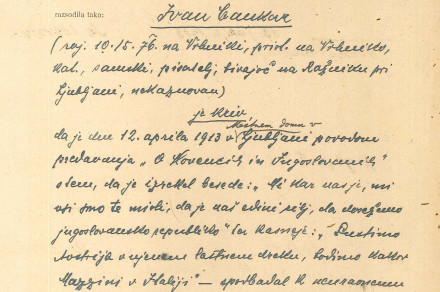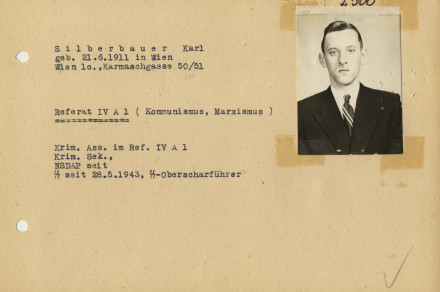A Decade of our Online Column Archivalia of the Month
Even after a decade, the main purpose of the column remains the same – to present to the public a selection of our documents; either those interesting for their visual impact/content, or those newly acquired or thus far overlooked. Also published here are records related to various anniversaries and interesting current events.
Archival documents in the column are presented in word and image. The number of reproductions we publish depends on the size and visual appeal of the document. The introductory text includes the following elements: title (original or adjusted), abstract, »legend« (where and when the document was created, its legal status, writing material, number of pages or pieces, language …), reference code, description of circumstances in which a document was created or description of a person, event or process to which the document refers, description of the document itself (especially its particularities), and, if needed, there is also a summary, abstract or translation of some particularly important part of a document that is being presented. At the end, there is always a list of literature and sources used.
Usually, new documents are published on the first day of each month. While published online, the original documents (if possible) are also being displayed in the hall of the Gruber Palace, just in front of the entrance to our reading room. If due to various objective reasons we are not able to display original records, then copies are used instead. The column has a status of electronic journal and is as such entered into Slovenian online library catalogue Cobiss.
The first 120 stories – diversity of content
So far, our column has told 120 different stories. They covered a number of various topics, celebrating important anniversaries or drawing attention to less known facts about well-known Slovenians. Stories told through archival records presented to their readers constitutional and administrative changes our country has gone through or described material culture of Slovenians as portrayed by probate inventories and last wills of individuals. There were also stories about religious conditions in our land, about migration, court trials, revolutionary events at the end of WWI (foundation of Yugoslavia, repression in occupied territories, our fight for state borders), about occupation, resistance, and multifaceted nature of World War 2 events, stories about post-war monolithic rule and those who opposed it, about injustices done (nationalization, staged political trials …) and their redressing (rehabilitation). Stories took us through democratization processes in Slovenia and the gaining of Slovenia’s independence, they dealt with different infrastructural project (such as construction of power plants, roads, bridges) and with economic conditions in various parts of Slovenia. They talked of traffic and traffic safety, of health and healthcare planning, charities, sports and tourism, they presented minutes of various state authority meetings, commemorations of more or less important events, they described films and some behind-the-scene goings on, contracts, protocol, and, last but not least, the profession of an archivist and the overall mission of archives. There were also some instances of conservation and restoration experts describing how to “heal the wounds” caused by use on some of the exhibited documents.
The first 120 stories – a palette of genres and eras
Archival documents presented in the column came in different material forms. Most of them were documents on paper (official letters, private correspondence, court records, minutes, reports etc.). There were also some maps, charts, situation sketches, drawings, parchment charters and nobility diplomas with wax seals, manuscripts on various subjects, rent-rolls, birth, marriage and death records, photos and postcards, cadastral records, films (documentaries, cartoons, short films), personal records (such as students transcripts or employee ID cards), digital database and once even a forged coin collected as evidence in a court case.
The earliest document presented in the column is a letter by Ernest the Iron to Carniolan nobles, dating back to April 1415, and the youngest one is a document from November 2007, written by France Bučar, contemplating old age as an art of life.
A far as the time of their creation is concerned, the documents published are a fine representation of archival holdings kept at the Archives – more than two thirds (82) of them were created in the 20th century, eighteen of them are from the 19th century, seven from the 18th century, four from the 17th century, six from the 16th century, and two from the 15th century. As mentioned before, one is from the start of the 21st century.
Updated image of the column
The beginnings of the column coincided with the updating of the Archives of RS website, so the initial concept of the column was expectedly dependent on technical possibilities and limitations of the platform Typo 3,which was used for our website platform at the time. By mid-2019, online content of the Archives was gradually transferred to a joint website of Slovenian state administration (Portal GOV.SI), which offered more options for such publishing (especially in terms of reproductions of material published), but still did not enable everything we would have wanted and needed. Our online column is now more user friendly, both for the readers as well as administrators, but by transitioning to a new platform some of the links to the column’s archive unfortunately got lost. In 2021 we are planning to redesign the existing archive of the column and place the already published article in an new environment.
Good co-workers are key to future success
In commemorating the first decade of our Archivalia of the Month I wish to thank all archivists for their ongoing dedication in selecting and presenting documents that are published in the column. Special thanks goes to our team of colleagues who make sure that articles are published regularly each month; to Alenka Hren, who translates the texts into English and enters the published articles into Slovenian online library catalogue Cobiss, and to colleagues Borut Jurca, Anton Bajec and Primož Tanko (for film also Roman Marinko) for making reproductions of the documents published. Layout and online publishing of the texts had for a number of years been done by Borut Jurca, and this work has for the last two years been continued by Gregor Jenuš. The task of attractive and safe presentation of documents exhibited in front of our reading room has over the years been diligently carried out by Lucija Planinc and Darja Harauer.
Among our first 120 stories published, there were some serious and some less serious ones, some happy and some tragic ones-something for each individual taste. It is our way to offer to the public a glimpse into our work and to use text and image to gradually make a unique mosaic from documents stored among the archival holdings of the Archives of RS.
To celebrate our work of the last decade, we have chosen ten articles, one from each year, and kindly invite you to have a look at them and take a trip down memory lane with us.
Andrej Nared


